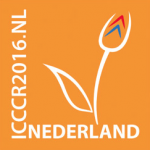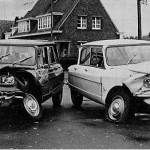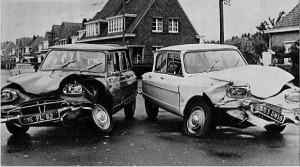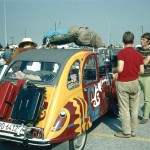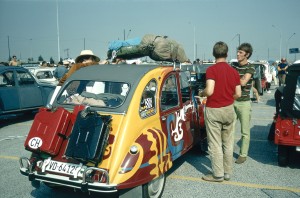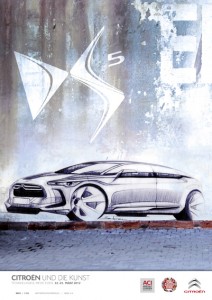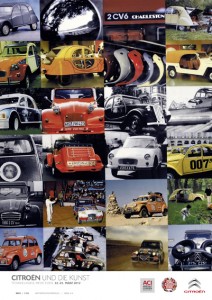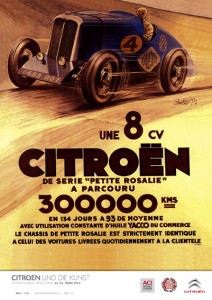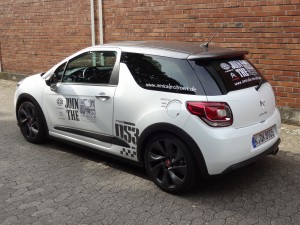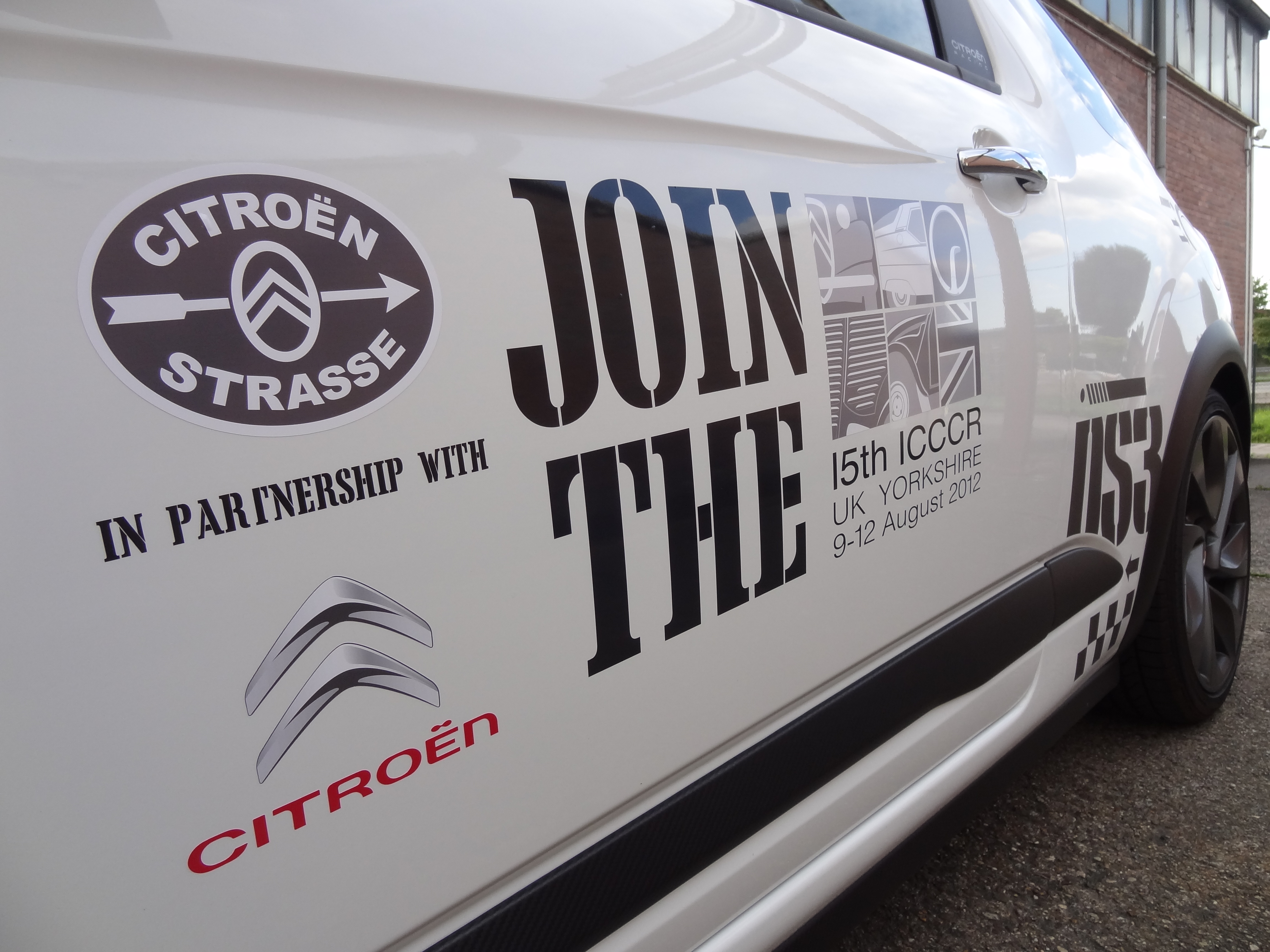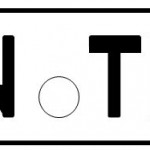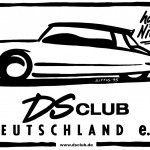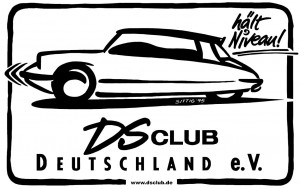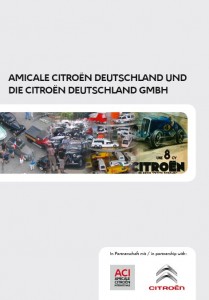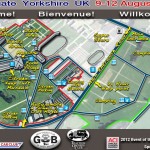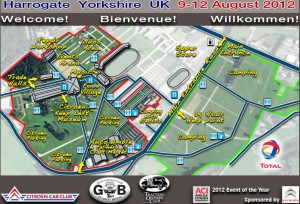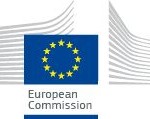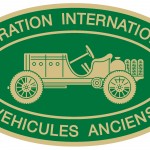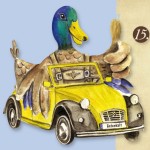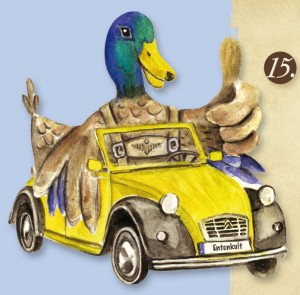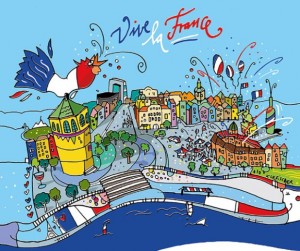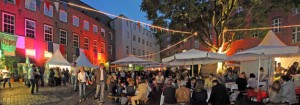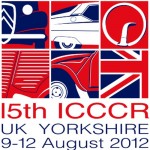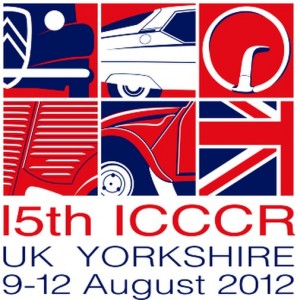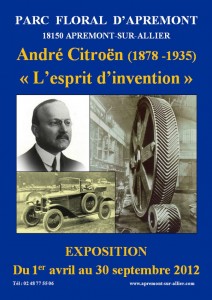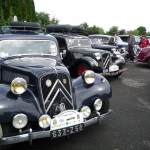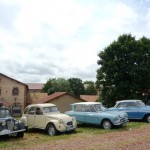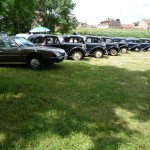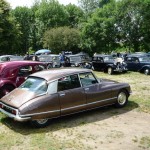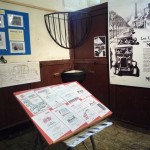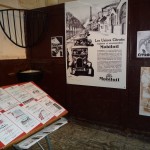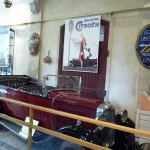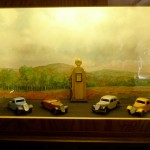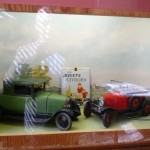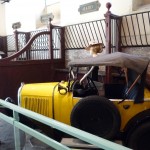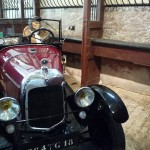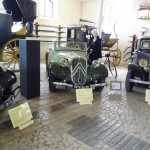
(German only)
Während sich die meisten Teilnehmer des nur alle vier Jahre stattfindenden Welttreffens der Citroën Clubs (ICCCR = „International Citroën Car Club Rally“) erst wenige Wochen oder Monate zuvor mit der Vorbereitung zur Anreise, Hotelbuchung, Kanalüberquerung etc. auseinandersetzen, kam die Amicale schon zu einem sehr frühen Zeitpunkt mit der Vorbereitung des Events in Berührung. Traditionell wird beim vorigen ICCCR das nachfolgende nunmehr 15. ICCCR gewählt. So sassen wir 2008 in Rom, zwei Delegierte aus Deutschland, zusammen mit zwei Dutzend anderen Amicale-Repräsentanten, und stimmten für den (einzigen) Kandidaten im Jahr 2012 ab. Und auch hier waren wir bereits rund 1,5 Jahre vorher informiert gewesen, als im Frühjahr 2006 bei der Jahreshauptversammlung der internationalen Amicale im Rahmen der Retromobile Paris 2006 bereits die Engländer ihr mögliches Engagement für 2012 ankündigten.
Zwischen Ankündigung einer möglichen Ausrichtung bis hin zu einer definitiven Zusage einer Ausrichtung vergehen meist einige Monate, um nicht nur mögliche Treffenplätze zu eruieren, sondern insbesondere einmal abzuschätzen, wer überhaupt die organisatorische Grossleistung einer Treffenorganisation dieser Größenordnung erbringen kann, und wo man die notwendigen Heerscharen von ehrenamtlichen Mitarbeiter dazu auftreibt.
Wer sich in diesem Zusammenhang einmal etwas intensiver mit solchen Ideen auseinandersetzt, wird schnell feststellen, daß einer möglichen Euphorie zur Ausrichtung dieser Veranstaltung schnell Ernüchterung dank der nackten Zahlen und Fakten der vorangegangenen Ereignisse folgt. Dank der Vorarbeit des ACI-Vorstands in den frühen 2000er Jahren müssen nämlich die Organisatoren zumindest auf „executive summary“ Ebene entsprechende Abschlussberichte abliefern. Da wären dann typischerweise Budgets von mehr als 250.000 Euro zu nennen, die grossteils (z.B. über Sponsoren, teils aber auch aus Clubkassen finanzkräftiger Clubs und Priavtpersonen) vorfinanziert werden müssen, das Organisieren einer entsprechend zusammenhängenden und logistisch nicht allzu dezentral gelegenen Veranstaltungsfläche und nicht zuletzt eine Projektorganisation, die mit rund 350-380 freiwilligen Vor-Ort-Helfern (die allesamt NICHT am Treffen teilnehmen können, weil sie dann arbeiten!) eine organisatorische Meisterleistung für eine reibungsfreie Abwicklung der Veranstaltung bringen müssen.
Auch die Projektlogistik ist nicht ohne Tücken; von Sanitärinstallationen über Strom, Catering, Polizeiunterstützung sowie Freigaben von Stadt, Ordnungsamt, Einbindung von Tourismus, Musikgruppen, Kommunikation und Marketing über Social Media, Webseiten in zumindest drei wenn nicht mehr Sprachen, Besucher-Hotline und und Pressearbeit, und und…
Wie schrieb Nigel Wild, Projektleiter ICCCR, in seinem Vorwort des Programmhefts so schön: „Das ICCCR ist wie das Fliegen einer Hummel – beides sollte eigentlich nicht funktionieren können. Bei der Hummel liegt es an der Aerodynamik, beim ICCCR daran, daß Amateure eine Veranstaltung tausender Teilnehmer organisieren müssen. Auf wundersame Weise geht es dennoch…“ Seit 1973 liefern die Macher eine Meisterleistung, die in fast allen Fällen von Nicht-Fachleuten im Veranstaltungs-Projektmanagement durchzuführen ist und bislang in fast allen Fällen grösstenteils reibungsfrei abgeliefert wurde – CHAPEAU!
Wie in den vergangenen Jahren auch, haben sich die Organisatoren meist für ein bereits existierendes Gelände für Grossveranstaltungen entschieden; meist sind kleinere Rennstrecken für automobile Veranstaltungen am besten geeignet, um nicht nur den Anreisestrom sondern auch den Verkehr im Gelände während des Events ohne Gefahr für Personen und Besucher aufnehmen zu können. Der „Greater Yorkshire Showground“ in Harrogate/Yorkshire, Englands größte zusammenhängende Veranstaltungsfläche, wurde – nachdem das ursprünglich geplante Gelände aufgrund einer Terminkollision 2 Jahre vor geplantem Datum nicht mehr zur Verfügung stand – als ideale ICCCR-Fläche auserkoren.
Nun – was konnten wir von der Amicale für die ICCCR Organisatoren tun? Zunächst haben wir Mick Popka, Nigel Wild und den anderen Mitgliedern des ICCCR-Orga-Kernteams erst einmal unsere deutsche Unterstützung zugesagt. Seit 2009 dann haben die Organisatoren dann Gelegenheit bekommen, auf der Technoclassica im Rahmen der „Citroën-Strasse“ Präsenz der deutschen Citroën-Clubs ihre Veranstaltung den Clubs, ihren Mitgliedern und den Oldtimer-Enthusiasten auf der weltgrößten Oldtimer-Messe vorzustellen. Mick war zu der Jahreshauptversammlung der Amicale stets anwesend und berichtete – ständig gespickt mit seinem typisch englischen Humor – über die vielfältigen Möglichkeiten des ICCCR und die besonderen Vorzüge englischen Bieres aus der Region Yorkshire… Doch dazu später mehr.
Mick Popka, zugleich Webmaster der ICCCR-Website und für Kommunikation verantwortlich, fehlte ein geeigneter deutscher Übersetzer – der „native speaker“, den er sich bei einem professionellen Übersetzungsbüro für teures Geld einkaufte, war nicht einmal einen Pfennig pardon Cent wert: ich fand pro Seite rund 50 (!) Übersetzungsfehler und habe daher angeboten, grosse Teile von Website, Flyer, Pressekommunikation, Programm etc. des ICCCR in deutscher Sprache über die Zeit bereitzustellen, sowie wenn nötig in den deutschen Präsenzterminen mit Übersetzungen zu assistieren. Allein in diesem Jahr 2012 sind mehr als 350, seit 2008 akkumuliert mehr als 650 emails bzgl. der Organisation und deren Unterstützung zwischen uns hin- und hergegangen, von den privaten Konversationen ganz zu schweigen, und die Telefonrechnung weist etliche 100 Euro Kosten für Telefonate über den Ärmelkanal aus…
Und durch die Zusammenarbeit, wenn sie dann für ein gemeinsames und zugleich schönes Projekt entsteht, ist zwischen uns eine Freundschaft entstanden – und wir haben Mick eingeladen, auch nach Ende des ICCCR wieder in Essen zu besuchen, selbstverständlich!
Zugleich haben wir nicht nur bei den Clubs, sondern auch bei Citroën in Deutschland und international für die Unterstützung des ICCCR geworben. Dank der wirklich offenen, positiven und insbesondere resultat-orientierten Zusammenarbeit mit dem Hersteller konnten wir über die Zeit konkrete Ergebnisse vorweisen: Citroën Deutschland hat allein in diesem Jahr in einigen Pressemitteilungen und internen Händlerinformationen auf das ICCCR hingewiesen und eine Retrospektive vor wenigen Wochen veröffentlicht, einen Counter auf der Technoclassica für das ICCCR-Team bereitgestellt, sich mit der Geschäftsleitung der CDG und führenden Köpfen des Unternehmens neben dem ICCCR-Team in einem Traction Avant Roadster für eine PR-Story präsentiert und und und…
Darüber hinaus wurde zusammen mit der Amicale Citroën und der CDG eine Presseaktion für Yorkshire entwickelt, bei der ein nagelneuer Citroën DS3 Racing werbewirksam unter dem Slogan „Amicale und Citroën join the ICCCR“ foliert wurde und der auf dem Veranstaltungsgelände in Harrogate direkt vor der Haupthalle positioniert wurde. Alle Teilnehmer des ICCCR erhielten in ihrer Willkommenstüte ein Infoblatt zur Amicale und der Zusammenarbeit mit der CDG, und konnten in einem Preisausschreiben eines der wunderschönen historischen Technoclassica-Poster in limitierter Auflage gewinnen; bei einer Charity-Aktion zugunsten einer Krebsklinik kam der DS3 Racing dann noch zu Rundfahrten („Charity Rides“) zum Einsatz und spielte so noch einige hundert Pfund zugunsten eines guten Zwecks ein – vielen Dank!
Das „Projekt ICCCR“ – auch wenn es nicht eine deutsche Veranstaltung war – ist damit erneut ein hervorragendes Beispiel für die Zusammenarbeit zwischen Fans und Marke, das seinesgleichen in der restlichen Citroën-Welt ausserhalb Frankreichs wirklich sucht: leider ist die Kooperation zwischen Clubs, Amicale und Hersteller-Landesgesellschaften in anderen Ländern weniger gut etabliert, und die Clubs werden entweder vollständig ignoriert und es findet keinerlei Dialog zwischen den Parteien statt, oder aber es wird auf kleinster Ebene eher informell geduldet und die Clubs werden Bittsteller für die eigene Marke – sicherlich ein verschenktes Potential, von dem wir hoffen, daß wir durch Vorangehen mit gutem Beispiel in anderen Ländern bald Nachahmer finden werden…!
Insbesondere gilt daher unser großer Dank der CDG und hierbei namentlich dem Leiter des Bereichs Presse und Öffentlichkeitsarbeit, Stephan Lützenkirchen, sowie Tilman Becker vom Eventmanagement, ohne die die Umsetzung sowohl von Technoclassica als auch Bereitstellung des DS3 Racing samt Promomaterial nicht denkbar gewesen wäre, sowie die Unterstützung durch Citroën-Geschäftsführer Holger Böhme. Vielen herzlichen Dank für Euer Engagement – Ihr seid Spitze!
Doch zurück zum eigentlichen Event. Nachdem die organisatorische Unterstützung im Wesentlichen abgewickelt war, waren wir glücklich, nur als „passive Gäste“ zum ICCCR reisen zu können. Das Wetter spielte wunderbar mit, die Fähre von Oostende nach Dover fuhr pünktlich (wir hatten uns aus Kostengründen gegen die Fähre Rotterdam-Hull entschieden: Oostende-Dover: 78 Euro, Rotterdam-Hull: 450 Euro), nur der Stau rund um London – zeitgleich liefen die olympischen Spiele in der letzten Woche – verursachte etwas Verzögerung, das Navi des DS3 Racing schlug dann TMC-gesteuert eine innenstadt-nahe alternative Route vor, die wir durch dann einschlugen.
Wir kamen donnerstags an und waren erleichtert: Petrus hatte ein Einsehen und rechtzeitig die wochenlang vorher geöffneten Fluttore geschlossen. Allein hierzu gab es eine Nebengeschichte: der „Greater Yorkshire Showground“ beherbergt seit über 100 Jahren eine alljährlich stattfindende Landwirtschafts- und Pferdeshow, die seit ihrem Bestehen nur drei Mal abgesagt werden musste – zu Zeiten des zweiten Weltkriegs. Und – in diesem Jahr! Mehr als 125.000 erwartete Besucher mussten zu Haus bleiben, alle Vorarbeit war umsonst, weil das Gelände massiv unter Wasser stand, die Fluten in die Haupthalle hereinliefen, und Matsch und knietiefe Furten ein Camping auf über 30% des Geländes unmöglich machten. Und das 6 Wochen vor ICCCR-Beginn! Mick bat mich, eine entsprechende Ankündigung auszusenden: das ICCCR findet trotzdem statt. Na klar findet es statt!
Der „Showground“ war das ideale Gelände für diese Art von Veranstaltung. Die Logistik kann auf ein Mindestmass reduziert werden, weil Catering, Sanitäranlagen, Hallen und Wiesen für Besucher und Aussteller zahlreich und insbesondere in fussläufiger Entfernung bereitstanden – man benötigte maximal eine Viertelstunde Fussmarsch von einem Ende zum anderen. Die Einfahrt war mit Ticketschaltern analog zu den „Peage“-Stationen der französischen Autobahnen vorbereitet – unsere Anmelde-Wartezeit am Donnerstag betrug gerade einmal 3 Minuten – und nicht 8-12 Stunden wir beim 2CV-Welttreffen 2011 in Salbris! Sehr schön – allein das führte zu allgemeiner Entspannung…
Vor Ort fanden wir die Campingplätze und ihre Infrastruktur als völlig ausreichend und gut dimensioniert. Neben dem Blick auf die bereits angereisten hunderten Citroën fanden wir im zentralen „Food Court“ eine Auswahl nationaler und internationaler Speisen, vom traditionellen „Fish and Chips“ über asiatische Spezialitäten, französische Leckereien und italienische Pizza- und Pastagerichte auch Bars, Eiswagen und Getränke für gross und klein. Ach ja – und eine Ale Bar mit sagenhaften 43 verschiedenen Sorten von Ale und Cider. Sehr englisch – und (leider) sehr lecker! 😉
Allabendlich gab es gute Musik und Entertainment, sei es von „Magic – A Kind of Queen“-Coverband, die so täuschend echt Live-Musik präsentierte, daß man beim Schließen der Augen meinte, das Original zu hören (spätestens bei „Radio Ga Ga“ konnte jeder mitsingen) über Folkmusik der bekannten Demon Barber Roadshow bis hin zu den Kentucky Cow Tippers, der „J B Goode“ klassischen Rock‘n‘Roll, „Spirit Of New Orleans“ mit Jazz, „Blackbeard’s Tea Party“ mit Barn Dance und und…
Grosses Highlight der Veranstaltung war natürlich das „Citroën Museum“, in dem Dutzende Exponate unter dem Motto „Keep Left“ der staunenden Öffentlichkeit präsentiert wurden. Wir waren geschichtlich etwas vorbereitet – das Buch „The British Citroën“ von Malcolm Bobbitt, das 1991 als eines der ersten zusammenfassenden Kompendien herausgegeben wurde, ist dafür bestens geeignet – und wussten über Exoten wie die 211 auf Basis übrig gebliebener 2CV-Fahrgestelle produzierten Bijou und den nur 3 jemals offiziell von Citroën hergestellten HY RHD („right hand drive“), aber diese und andere Pretiosen nicht nur zu kennen, sondern sie an einem Ort gesammelt und ohne Absperrketten vorfinden zu können, ist aussergewöhnlich und zugleich einmalig in der gesamten historischen Citroën-Präsentation. Wer kennt schon den 1928 Citroën 12-24 Roadster, einen 1955 Slough-built Citroën 2CV SAP Pickup von dem nur 130 insgesamt und 65 für die Navy hergestellt wurde, einen 1956 RHD Citroën 2CV SAZ Saloon (nur zwischen 1953 und 1960 wurden 2CV in Slough hergestellt), eine seit über 60 Jahren in Familienbesitz befindliche 1929 gebaute Kegresse.
Unter anderem fanden sich ein CX Loadrunner, der einzige je als RHD gebaute 1995 C15 3-Achser Umbau von Chausson Leotard, ein 1960 RHD DS19 und 1976 Ami Super 1015ccm, 1975 GS 1220 Estate in leuchtendem AC329 Orange Ténéré, ein 1977 GS Estate, 1961 Panhard PL 17 RHD, ein 1964 Bijou Chassis Nr. 268 und ein 1925 Citroën C3 5HP “Tréfle”, von denen nur noch wenige Exemplare überhaupt existieren, der bekannte und derzeit zum Verkauf anstehende „DSM 27“ 4-Türer Cabriolet mit 2,7L V6 SM Motor und umgebautem C35-Getriebe und CX-Kühlung, der im zweiten Gang 80mph (135km/h) ermöglicht!
Ein optischer Hingucker war der 1973 Citroën D Super 5 von Len Drew, ein Auto, das im Zustand „1++“ – sicherlich besser als neu! – präsentiert wurde. Len hat den Wagen, der 1986 von einem Citroën-Händler mit nur 36.000 Meilen erworben wurde, total zerlegt und in Eigenarbeit und teils im Garten und in der Küche (man kann sich die Belastbarkeit seiner Ehefrau kaum vorstellen) und NUR mit Neuteilen wieder aufgebaut. Bis ins kleinste wurde jedes Detail perfekt bearbeitet – selbst die Schweisspunkte der Karosserie wurden sorgsam aufgefüllt, um eine nahtlose Oberfläche zu erzeugen. Der von einigen als der „beste DS der Welt“ bezeichnete Wagen, der für jede Unternehmenspräsentation und höchstauflösenden Aufnahmen in Fotostudios bestens geeignet ist, steht wohl zum Verkauf und kann für 75.000 Pfund vom Eigner erworben werden.
Techisch vielleicht am spektakulärsten war allerdings ein vom „Transport and Road Research Laboratory Crowthorne, Berkshire“ (TRRL) umgerüsteter Citroën DS19, mit dem Experimente für ein „driverless car“ gemacht wurde. Man möge sich das vorstellen – vor rund 50 Jahren baute man bereits an Technologien für die Verwendung, die heutzutage autonom agierende Fahrzeuge wie beispielsweise das Google Car, die mit Hochleistungscomputern über Bilderkennung und Kartenmaterial erstmalig auf abgelegenen Teststrecken ihre Runden absolvieren!
Das Prinzip damals beruhte auf der Kommunikation zwischen Automobil und Fahrbahn – über Magnetschleifen auf der Stasse sollte eine Art Autopilot analog zum Flugverkehr etabliert werden, mit dem eine höhere Verkehrsdichte auf den Strassen erzielt werden sollte. Der DS erwies sich als besonders geeignetes Testfahrzeug, weil das zentral gesteurte Hydrauliksystem einen feinfühligen Eingriff in die Lenkung und Bremssystem ermöglichte. Bei Testfahrten konnten so Geschwindkeiten bis zu 80mph unter beliebigen Wetterbedingungen ohne Geschwindigkeits- oder Richtungsabweichung erzielt werden – und weit präziser als bei menschlicher Steuerung des DS. Mitte der 70er Jahre wurde die Forschung an der Technologie aus Kostengründen eingestellt.
Aus dem Conservatoire Citroën kam unter anderem das „Vehicule G“, (der „kleine“ Vorgänger des HY), das „Projet Y“ (der Visa-ähnliche Prototyp des Ami8-Nachfolger, aus dem später der Oltcit entstehen sollte), das „Projet L“ (Prototyp des CX von 1971), der „Panhard-DS“ (ein auf DS-Chassis Basis aufgebauter Panhard 24, 1967, vorgesehen für DS21 Motor), sowie der „Urbain 2“ (1973) und „Mini-ZUP“ (eigentlich der „Urbain 1“, 1972); im Freigelände war ein C4 WRC Sebastien Loeb-Mockup (für Promozwecke) zu bestaunen.
Neben dem Museum unmittelbar angeschlossen war die Halle der Händler. Hier konnten Ersatzteile und Spezialwerkzeuge, Literatur und Modellautos, Souvenire und Devotionalien, Citroen-Shirts und Taschen, und und und… erworben werden und mit Fachleuten technische Tips zu Instandsetzung ausgetauscht werden. Leider wurde hier von einem Diebstahl in der Halle beim Aufbau berichtet – der bekannte DS-Spezialist Dirk Sassen aus Düsseldorf berichtete vom Verlust einer Lichtmaschine – und man war noch bei der Auswertung der CCTV Überwachungskameras, um darauf Rückschlüsse auf den möglichen Dieb zu ziehen. Hier die Bitte an alle – falls jemand solch einen Vorgang beobachtet haben sollte – bitte bei uns oder Dirk melden, wir reichen selbstverständlich die Meldung auch gern anonym weiter. Diebstahl ist kein Kavaliersdelikt, und es geht wirklich nicht an, daß Leute, private wie kommerzielle, die sich für die Szene engagieren und freiwillig Strapazen wie Anreise und Standbau auf sich nehmen, auf diese schäbige Tour um ihr Hab und Gut gebracht werden…!
Vor der Halle waren ebenso Teilehändler und auch private Verkäufe aus dem Kofferraum zu finden. Für technisch Interessierte gab es im Freigelände noch einen in den 1938 von Rolls-Royce gefertigten Merlin-V12 Motor mit rund 1400 PS und satten 27 Liter Hubraum zu bestaunen und zu hören, als dieser zu Showzwecken in Betrieb genommen wurde. Varianten des Motors kamen in der P-51 Mustang im zweiten Weltkrieg zum Einsatz. Auch eine grosse Halle, in der Wartungs- und Reparaturarbeiten durchgeführt werden konnten, und die in ihrer Größe und Ausstattung bei einem Vertragshändler hätte zu finden sein können, wurde gern genutzt, um den einen oder anderen Schaden zu beheben.
In unmittelbarer Nähe zum Hauptgebäude war der lokale Citroën-Händler David Fox mit einer Reihe von Fahrzeugen präsent. Leider zeigte sich der professionelle Teil von Citroën UK nicht von seiner optimalen Seite; die vertrieblichen Ansprechpartner waren auch hier deutlich zurückhaltend im Hintergrund und gaben nur widerwillig Auskunft: man hatte den Eindruck, man störe mehr als alles andere und fokussierte sich daher aufs Fotoshooting der hier auf dem Kontinent doch eher seltenen Rechtslenker-Modelle. Auch war vom Mutterhaus aus Slough / Coventry praktisch kein offizieller hochrangiger Vertreter anwesend. Sicherlich ist bei der derzeitigen Restrukturierung des Unternehmens die Motivation, sich in der Freizeit fürs Unternehmen einzusetzen, nochmal deutlich geringer und damit sicherlich ein Erklärungsversuch, jedoch keine Entschuldigung für die komplette Abwesenheit auf dem größten Citroën-Treffen Englands seit rund 30 Jahren!
Auch auf internationaler Ebene sind einige Dinge nicht so gelaufen, wie sie hätten laufen sollen: die lange zugesagte finanzielle Unterstützung durch Automobiles Citroën für das internationale „Event Of The Year“, die vertraglich in Höhe von 36.000,- Euro festgeschrieben war, wurde einseitig durch Citroën nicht nur auf 30.000,- reduziert: sie wurde bis Beginn der Veranstaltung erst gar nicht ausbezahlt! Citroën Paris entschuldigte sich mit internen organisatorischen Restrukturierungen und damit verbundenem Aufschub nicht priorisierter Entscheidungen. Einmal davon abgesehen, daß durch die Schwäche des Euro gegenüber dem Pfund der Wert von rund 30.000,- Euro zum geplanten Zeitpunkt der Auszahlung auf nunmehr nur noch 23.000,- Euro (Euro->Pfund) reduziert hat – obendrein mussten Privatleute und Clubs aus eigener Tasche das fest verplante Sponsoring zwischenfinanzieren. Auch der Vorstand der internationale ACI (aus dem wir 2011 aus Protest ausgetreten sind) hat nichts getan, die Gelder einzufordern – ebenso leider sehr beschämend und sicherlich aus dieser Sicht kein Vorzeigeprojekt für Citroën und den ACI-Vorstand international.
Doch kommen wir zu einem erfreulichen Teil, was das Finanzielle angeht: Mit Mick, der als „Faktotum“ in einer Union Jack Weste samt Union Jack-Strohhut in seinem offenen 1939 Traction Avant Roadster omnipräsent zu sein schien und alle kleinen Problemchen mit dem notwendigen englischen Humor und Sachverstand lösen konnte, bin ich dann am zweiten Tag zur zentralen Lloyds Bank nach Harrogate gefahren, um die Tageseinnahmen sicher zu deponieren. Einmal abgesehen davon, daß man jedem Citroënisten nur empfehlen kann, einmal eine Fahrt mit einem Traction-Cabriolet zu unternehmen, um die doch einzigartige Kombination von sehr ursprünglich-simpel-genialer technischer Konstruktion trotzend den Elementen Wind und Wetter einmal selber verspüren zu können, hat der Traction in der Stadt für einiges Aufsehen gesorgt – viele erinnerten sich daran, selbst einmal einen Citroën gefahren zu haben und versprachen, das Treffen als Tagesbesucher anzusteuern. Der Tip für alle Veranstalter ist, zusätzlich an zentralen Standorten in den Städten für Präsenz zu sorgen, wenn ein Citroën-Treffen in der Nähe stattfindet, wenn man Tagesbesucher und Öffentlichkeit mit einbinden will…!
Wir haben darüber hinaus 4 Tage entspannt in und um Harrogate verbracht und einen der schönen alten Doppeldecker-Busse genutzt, um vom Treffengelände zur Innenstadt zu fahren. Harrogate an sich ist bereits einen Halt wert, so man denn gern sich in einer typischen Yorkshire-Gegend aufhält: das dem alten Baden-Baden ähnliche Kurstädtchen mit seinem besondern Charme verfügt über eine Thermalquelle, viele Parks und Cafes; allein „Betty‘s Café Tea Room“, wie Automobiles Citroën 1919 gegründet, ist einen Zwischenstopp wert: die handgemachten Kuchen und Muffins schmecken köstlich und werden neben dem Caféraum in einem viele Jahrzehnte alten Ladenlokal auf ehrwürdigen Chippendale-Regalen formidabel präsentiert und von Ladenpersonal mit spitzenverzierten Schürzen wie zu Grossmutters besten Zeiten verkauft. Man fühlt sich um Jahrzehnte zurückversetzt – demzufolge ist die Schlange der Wartenden länger als die bei manchem ach so hypen Abercrombie & Fitch Outlet!
Und von hier aus kann man die berühmten „Dales“ erkunden, jene Landschaften, in denen Fernseh-Serien wie „Der Doktor und das liebe Vieh“ gedreht wurden und die zahlreiche ursprüngliche Habitate seltener Vögel und Pflanzen in einer einzigartig hügeligen Landschaft bieten. Und die Hotels, so man sich denn für eines nicht einer grossen Kette angeschlossenen entscheidet, verfügen noch über die hochflorigen Teppiche, in denen man bis zu den Knöcheln zu versinken droht, alte Rezeptionstheken, einer vielfältigen Auswahl an Tea sowie dem einen Tüchen Instant-Kaffee samt Wasserkocher auf den kleinen Zimmern, und natürlich noch immer den klassischen separaten brühendheissen und eiskalten Wasserhähne am Waschbecken, bei denen man sich im Jahre 2012 noch immer fragt, ob der Verkauf von Mischbatterien nicht eine Revolution auslösen würde…
Optisches Highlight war sicherlich das grosse Abschlussfeuerwerk, was die Organisatoren auf einem nahegelegenen alten Eisenbahn-Viadukt vorbereitet hatten. Fast eine halbe Stunde lang und mit ausgesuchten Musikstücken u.a. von Richard Strauss und Carl Orff genossen wir am Samstag abend eine grosse Inszenierung am wolkenfreien Abendhimmel – einfach genial!
Die Rückreise gestaltete sich als nahezu reibungsfrei – der Londoner Ring war am Sonntagnachmittag, dem Abschlusstag der olympischen Spiele, praktisch autofrei und wir konnten durchgängig mit demTempomat des DS3 Racing entspannt bis zur Fähre cruisen und auf dem Kontinent die Heimreise antreten.
Rund 300 Bilder sind auf den Amicale Seiten zu sehen, im Menu oben auf der Homepage unter „Veranstaltungen“ bzw. direkt: https://amicale-citroen.de/events/2012-icccr-harrogate-yorkshire/
Die ersten Aussagen des ICCCR-Controllers sind zum Zeitpunkt des Schreibens dieses Artikels bereits eingetroffen: zumindest soll kein finanzieller Verlust beim Treffen entstanden sein – die Besucherzahlen, Sponsorings und Merchandise-Verkäufe sollen die Unkosten gedeckt haben. Weiter dazu in einer der nächsten Ausgaben, wenn die offiziellen Abrechnungen des ICCCR final vorliegen.
Ach ja, die Mühe der Übersetzungen hat sich gelohnt: ich hatte als einer der ersten Registrierten nach der Startnummer „6“ gefragt und diese dann offiziell auch erhalten – nun prangt das schöne Treffenschild an prominenter Stelle in der heimischen Sammlung!
Letzte News ist, daß Mick uns auf der nächsten Technoclassica wieder beehren wird und all denjenigen, die nicht in Harrogate dabei sein konnten, noch einmal Gelegenheit bietet, Souvenirs des 15. ICCCR von ihm zu erwerben. Freut Euch also darauf, auch von Mick noch einmal die Sicht auf „seinen“ Event zu hören!
Wenn auch Ihr einen kleinen Reisebericht oder Eindrücke vom ICCCR uns und den anderen schildern wollt, bitte hinterlasst uns Eure Kommentare auf dem Artikel zum ICCCR auf den Amicale-Webseiten. Wir – und die Organisatoren – sind sehr daran interessiert, zu wissen, was gut lief, und was nicht.
Herzlichen Dank!
///Stephan Joest
Amicale Citroën Deutschland
www.amicale-citroen.de
Fotos zum Event auf
https://amicale-citroen.de/events/2012-icccr-harrogate-yorkshire/
Nachtrag:
Der Artikel wurde zu einem Zeitpunkt verfasst, bei dem nicht alle Fakten umfassend zur Verfügung standen. Die Tatsache, dass Citroen England eine Unterstützung des Transport der Fahrzeuge des Conservatoires sowie beim Markenauftritt des Händlers und im Marketing leistete, war damals nicht bekannt. Darüber hinaus war die Summe der von Citroën erbrachten Unterstützung 36k€, von denen 30k€ dem Event zur Verfügung gestellt werden sollten. Ferner war mir die Anwesenheit von Marc Raven, Direktor Kommunikation Citroen England, nicht bekannt, der zu einem Zeitpunkt in Harrogate war, als wir bereits die Veranstaltung wieder verlassen habe. Diese Informationen standen erst im Dezember 2012 zur Verfügung. Wir bitten um Entschuldigung.
